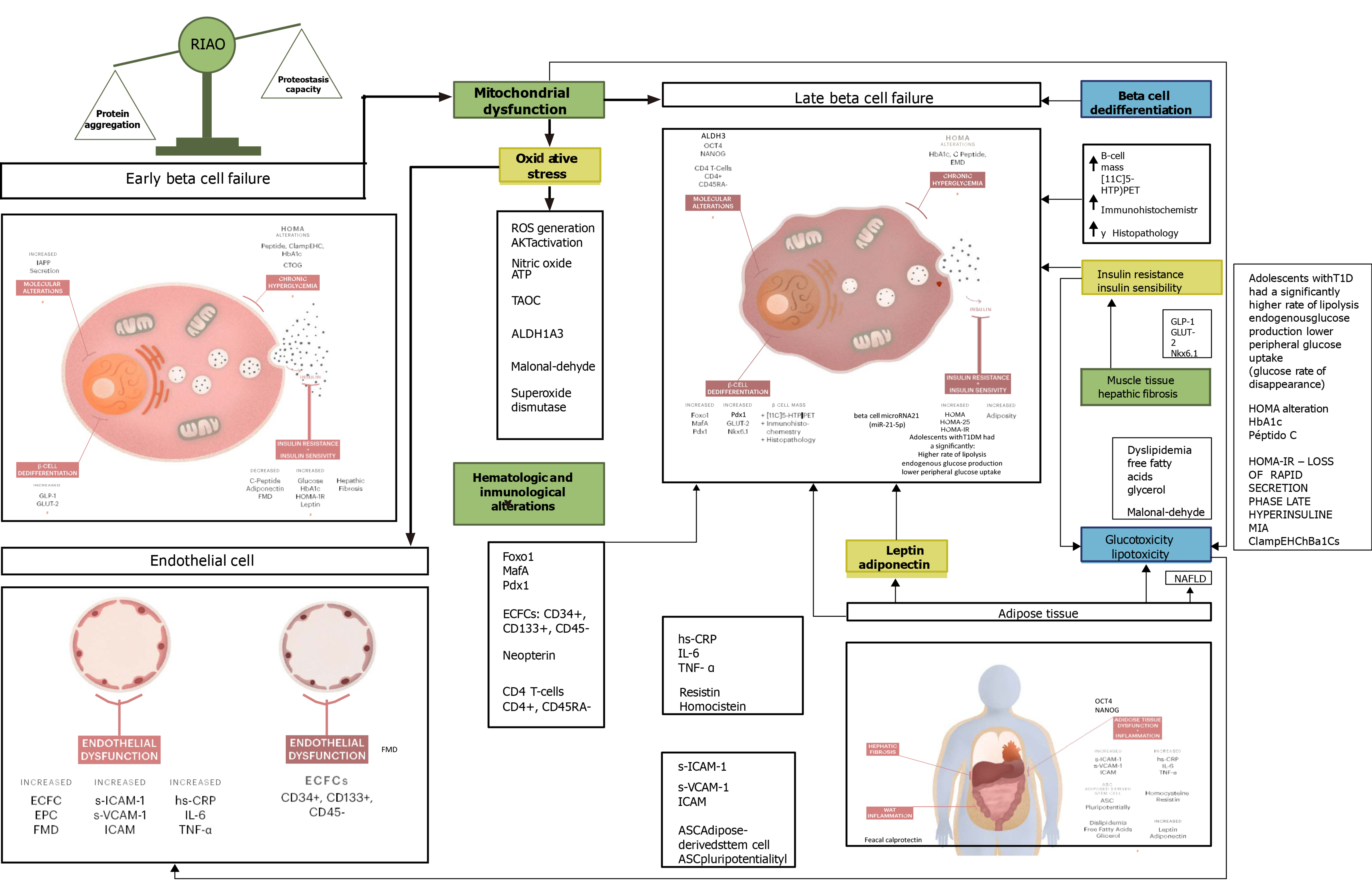Copyright
©The Author(s) 2021.
World J Diabetes. Aug 15, 2021; 12(8): 1325-1362
Published online Aug 15, 2021. doi: 10.4239/wjd.v12.i8.1325
Published online Aug 15, 2021. doi: 10.4239/wjd.v12.i8.1325
Figure 2 Global view of the main biomarkers analyzed on the articles included for this review.
The biomarkers are divided into the ones that substantially appear on early beta cell damage (characterized by increased insulin and lipid and islet amyloid polypeptide secretion) and increased insulin resistance and of late beta cell damage (characterized by increased oxidative stress and insulin resistance, a markedly insulin secretion and an impaired mitochondrial function, which translates into islet amyloid polypeptide fibrillation). RIAO: Real human islet amyloid polypeptide amyloid oligomers; FMD: Flow-mediated dilatation; CAM: Cytoadhesive molecule; hs-CRP: High-sensitivity C-reactive protein.
- Citation: Calderón-Hernández MF, Altamirano-Bustamante NF, Revilla-Monsalve C, Mosquera-Andrade MB, Altamirano-Bustamante MM. What can we learn from β-cell failure biomarker application in diabetes in childhood? A systematic review. World J Diabetes 2021; 12(8): 1325-1362
- URL: https://www.wjgnet.com/1948-9358/full/v12/i8/1325.htm
- DOI: https://dx.doi.org/10.4239/wjd.v12.i8.1325









